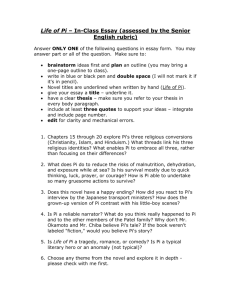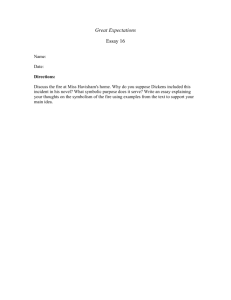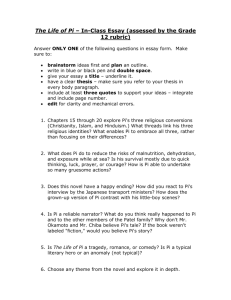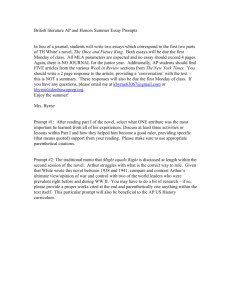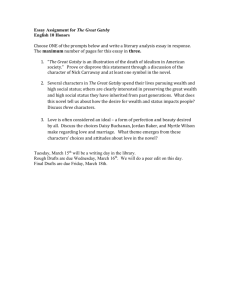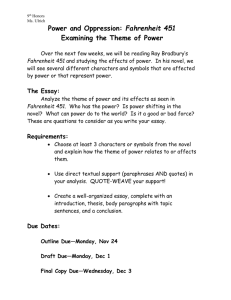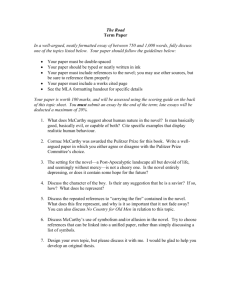2014-03-Q3 Take-Home Essay Assignment
advertisement
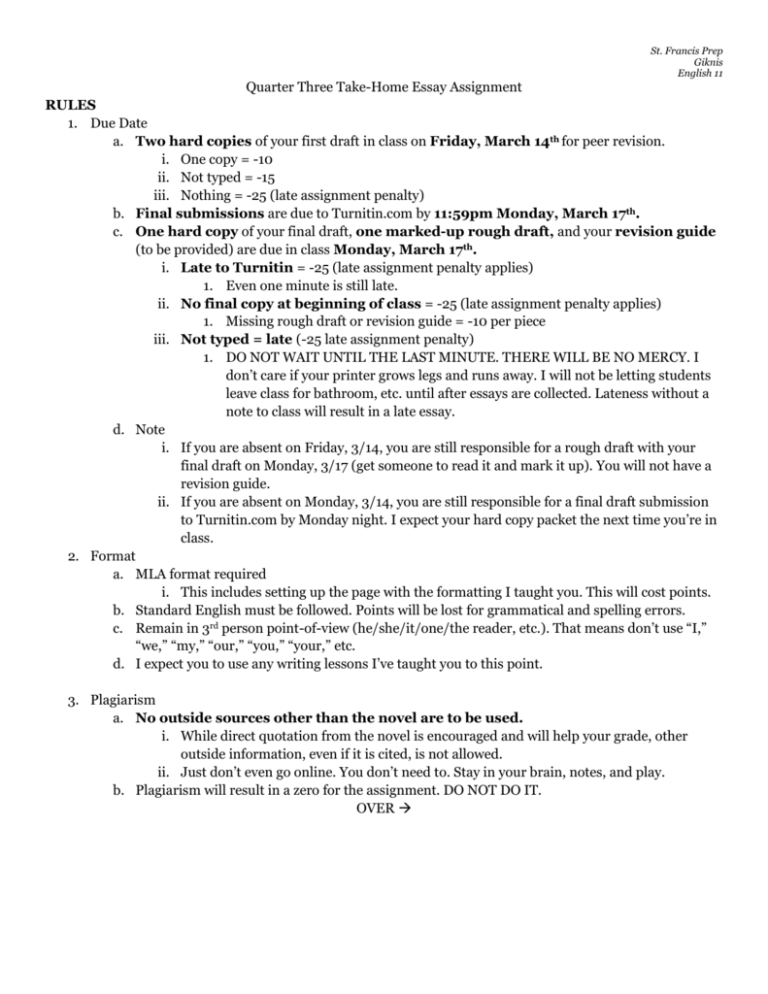
St. Francis Prep Giknis English 11 Quarter Three Take-Home Essay Assignment RULES 1. Due Date a. Two hard copies of your first draft in class on Friday, March 14th for peer revision. i. One copy = -10 ii. Not typed = -15 iii. Nothing = -25 (late assignment penalty) b. Final submissions are due to Turnitin.com by 11:59pm Monday, March 17th. c. One hard copy of your final draft, one marked-up rough draft, and your revision guide (to be provided) are due in class Monday, March 17th. i. Late to Turnitin = -25 (late assignment penalty applies) 1. Even one minute is still late. ii. No final copy at beginning of class = -25 (late assignment penalty applies) 1. Missing rough draft or revision guide = -10 per piece iii. Not typed = late (-25 late assignment penalty) 1. DO NOT WAIT UNTIL THE LAST MINUTE. THERE WILL BE NO MERCY. I don’t care if your printer grows legs and runs away. I will not be letting students leave class for bathroom, etc. until after essays are collected. Lateness without a note to class will result in a late essay. d. Note i. If you are absent on Friday, 3/14, you are still responsible for a rough draft with your final draft on Monday, 3/17 (get someone to read it and mark it up). You will not have a revision guide. ii. If you are absent on Monday, 3/14, you are still responsible for a final draft submission to Turnitin.com by Monday night. I expect your hard copy packet the next time you’re in class. 2. Format a. MLA format required i. This includes setting up the page with the formatting I taught you. This will cost points. b. Standard English must be followed. Points will be lost for grammatical and spelling errors. c. Remain in 3rd person point-of-view (he/she/it/one/the reader, etc.). That means don’t use “I,” “we,” “my,” “our,” “you,” “your,” etc. d. I expect you to use any writing lessons I’ve taught you to this point. 3. Plagiarism a. No outside sources other than the novel are to be used. i. While direct quotation from the novel is encouraged and will help your grade, other outside information, even if it is cited, is not allowed. ii. Just don’t even go online. You don’t need to. Stay in your brain, notes, and play. b. Plagiarism will result in a zero for the assignment. DO NOT DO IT. OVER St. Francis Prep Giknis English 11 INSTRUCTIONS 1. Length a. Write a five paragraph essay on one of the following prompts. Your essay should be a minimum of 2 pages and no more than 2.5. I will stop reading at 2.5. 2. Prompts: a. Your job is to pick one of the following and support it with three (3) pieces of specific support (one piece of support in each body paragraph). b. These should appear, along with your supports and significances, word for word, in your introductory paragraph. c. For your final take-home essay, you may create your own argument about either The Great Gatsby or The Road if you want. However, you must submit it to me on turnitin.com for my review and written approval by 3:00, Tuesday, 3/11. i. Your submission must come in “subject” and “stance” format, with both clearly indicated. ii. Any unapproved essay topics will result in a 25 point penalty. Subject and Stance (Topic and Argument) 1. Cormac McCarthy uses diction to illustrate the thin divide between humans and animals in his post-apocalyptic world. [Diction is defined as the choice of words in writing.] 2. Cormac McCarthy argues in his novel that remaining true to one’s principles and personal code of ethics is more important than survival at all costs. 3. The novel’s conclusion is appropriate and in keeping with the themes and ideas presented throughout the work as a whole. [Note: You must use examples from the entire novel.] 4. F. Scott Fitzgerald’s use of direct and indirect characterization allows for the reader to quickly and intimately know the characters of his novel, The Great Gatsby. [Note: You must talk about both forms of characterization for this essay.] 5. Throughout the opening chapters of the novel, Fitzgerald uses several techniques to create a mysterious aura around his title character. 6. Both Fitzgerald and McCarthy use description and imagery to create vastly different but equally vivid settings for their respective novels.
